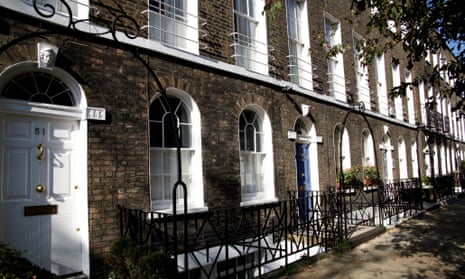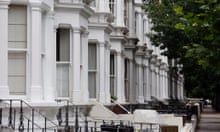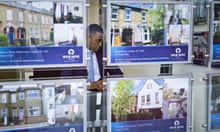The cluster of predicaments that make housing too expensive for so many Londoners manifests in Islington with striking clarity. The birthplace of Blairism, the home of Boris Johnson and the sixth most deprived local authority area in the UK, the borough is as trendy as it is pricey as it is poor.
Like other inner London boroughs, Islington knows both the gains and the strains of gentrification. Indeed, it can claim to be the phenomenon’s spiritual home, the place where the lately deceased architect Harley Sherlock helped pioneer it by reviving neglected streets and sociologist Ruth Glass critiqued it. As London entered the 1980s, Upper Street, linking Highbury to the Angel by way of the Town Hall, was one of its most bohemian avenues, all alternative theatre, radical book shops and social deviants. I know all about those - I was one of them.
Today, that counter culture has gone mainstream and upmarket, and the aging liberal middle classes who bought and did up dirt cheap terraces are, in property wealth terms, filthy rich. Their descendants have been priced out to Hackney and beyond. Where Islington meets the City, buying a two bedroom flat can set you back the best part of two million while renting one privately close to Arsenal FC costs around £400 a week. Yet Islington remains far more working class than its enduring Granita reputation might suggest. Some 40,000 of its 100,000 homes are for social rent though close to 4,000 of those are overcrowded.
Councils have limited remedies for such housing ills, and those often entail uneasy trade-offs between ideals and financial realities. Islington, however, prides itself on finding ways to regulate the bad and encourage the good for the benefit of the borough and most of its residents. The Labour-run administration sees itself as a radical trailblazer from which other London boroughs and Labour nationally could learn. Here are some of its initiatives:
- The council is setting up its own social lettings agency that will effectively control some private sector rents. This in-house, not-for-profit scheme would charge renters no fees and connect those who rely on housing benefit with properties priced at or below local housing allowance levels. This should make it easier and more secure for people on low and middle incomes who don’t qualify for social housing to rent privately. To make the agency appeal to landlords, who could probably charge higher rents if they wished, the council would provide support services and guarantee that rents would be paid in advance, even subsidising arrears if necessary. It’s a mechanism that aspires to holding rent levels down and raising private rented sector standards in a way that appeals to landlords as well as tenants - a difficult circle to square.
- Islington is fostering community support for building additional homes on existing council-owned estates by guaranteeing that new social rented properties will be offered first to local people on those estates who need them, before those on the borough’s general waiting list (which will still continue to be used when allocating homes from existing council stock). The council’s cabinet member for housing James Murray, says that, as a result, there’s been a much more enthusiastic attitude among council tenants to the prospect of builders moving in and increasing housing density on estates.
- Islington has led the way in resisting the government’s “affordable rent” policy. This requires housing associations, which supply most of London’s sub-market price housing, to let properties at rents which can go as high as 80% of local private sector levels - far higher than conventional social rents, which in expensive Islington are about 30% of those market rates. Although the borough, backed by eight other London councils, lost a court challenge to Boris Johnson’s insistence that they adopt “affordable rent”, Murray says they’ve found ways of avoiding it through local planning polices and relationships with housing associations.
- Though far from alone in trying to police bad private landlords, Islington says it has set about it with particular vigour along the Holloway and Caledonian Roads, which contain over 3,500 tenants in “houses in multiple occupation”. Officers visited 208 such properties and found that 141 failed to meet minimum standards, such as cleanliness in communal areas, mouse infestation and dodgy electrics. The council wants to bring in a stringent licensing scheme for private landlords on these roads. Those who decline to join will risk prosecution and fines.
- Assessing the financial viability of property developments has become a hugely contentious issue, as Sir Michael Lyons’s recent report on housing for Labour recognised. Developers have a financial interest in downplaying potential profits, as this might result in councils demanding less from them in the way of affordable homes as part of giving their plans a green light. It’s often claimed that councils are bamboozled by developers’ trickery with maths. Islington is working on guidance aimed at making dealing with viability appraisals more transparent and efficient - in other words, less slippery and more helpful to people on ordinary incomes looking for places to live.
- Last year, the borough issued what is called an “Article 4 direction” to restrict the effects in Islington of the government allowing property owners outside London’s central activity zone (CAZ), which takes in part of Islington, to cash in on high residential property values by allowing offices to be converted into flats without obtaining planning permission. This freedom allows such conversions to be made without any affordable homes being supplied. The government attempted to overturn the Article 4 before a compromise was reached. Most of Islington’s offices fall within the CAZ are so were already protected, but now about half of those outside the CAZ are protected too.
- Islington is the first London borough to use planning policy to impose penalities on so-called buy-to-leave owners. This means investors could pay a price if properties are frequently left unoccupied.
On Wednesday, Ed Miliband tweeted a request for people’s thoughts about housing.
If he wants to mitigate some of the capital’s worst affordability problems, he might do well to have a chat with Labour colleagues in the borough of Boris and Blair.











Comments (…)
Sign in or create your Guardian account to join the discussion